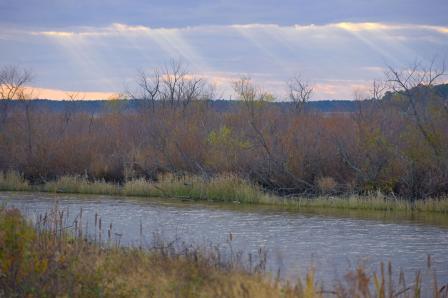New Jersey’s Clean Water Act §404 Permit Program
New Jersey is the most densely populated state in the nation with a population of 8,958,013 in 8,721.3 square miles or 1,195.5 people per square mile (2015 Statistics from the U.S. Census). As a result, New Jersey has faced many environmental issues in advance of other states. One of these is the notion of assumption, that is, assuming the duties of the federal Clean Water Act’s (CWA) Section 404 permitting program. The Clean Water Act provides states and tribes the option of assuming administration of the Section 404 permit program in certain waters within its geographic boundaries; the U.S. Army Corps of Engineers retains authority for tidal waters and adjacent wetlands and other waters effected by interstate and foreign commerce. New Jersey and Michigan are the only states to have formally assumed the program and therefore offer a framework for other states looking toward assumption of the 404 program.
New Jersey began looking at assumption in 1987 when it passed the Freshwater Wetland Protection Act (FWPA). The law contained a provision directing the state to “take all appropriate action to secure the assumption of the permit jurisdiction exercise by the United States Army Corps of Engineers pursuant to the Federal Act.” (N.J.S.A. 13:9B-27) Due to an engaged local audience, the state also sought to reassure the regulated public that this authority would eventually be in their hands, through state assumption. In 1989 New Jersey sent the U.S. EPA the initial transfer package and began looking at regulations for states looking to assume. A few short years later, in 1993, the final package was submitted and was subject to public hearings. Springing from the public hearings was a Memorandum of Understanding (MOU) between New Jersey, The U.S. Fish and Wildlife Service and the EPA to maintain an agreement on what actions New Jersey would take regarding Endangered Species, to ensure the utmost protection of listed species. This MOU states that when the state of New Jersey and the Fish and Wildlife Service cannot agree on permitting actions moving forward with regard to an endangered or listed species, the case will go to the EPA for review. Therefore, the relationship forged from the MOU and assumption processes has created positive inter-governmental relationships and encouraged a streamlined process for review. New Jersey officially assumed the program in 1994 and the MOU still stands to this day. In addition, the State Legislature appropriated sufficient funds for the Department of Environmental Protection to staff and equip a statewide, freshwater wetlands regulatory program.
New Jersey’s wetland program is regulatory-focused and resides within the Department of Environmental Protection’s Division of Land Use Regulation. ExitOther Core Element areas are addressed by other divisions within the Department of Environmental Protection. The state has found that the strong regulatory program has improved the relationship with its regulated public, and paved the way for an amicable working relationship with Fish and Wildlife Service, the EPA, and the Army Corps of Engineers. New Jersey recently utilized EPA’s Wetland Program Development Grants (WPDG) to document compensatory mitigation efforts by incorporating mitigation sites and mitigation bank sites into New Jersey’s Environmental Management System (a database tracking system for all of DEP) and by creating GIS layers depicting said sites for better tracking of restoration efforts. New Jersey suggests that interested states or tribes should work to incorporate assumption language into their state law, cover all jurisdictions and regulate all of the same activities. Bear in mind to not have exemptions that are inconsistent with the exemptions under the Clean Water Act section 404, keep each state’s natural resources in mind, and to be in accordance with Section 106 of the National Historic Preservation Act (16 U.S.C. 470(f)) as well.
Regulatory program improvements, and assumption, are a successful means of improving upon a state or tribe’s wetland program as illustrated by the state of New Jersey. Permitting is streamlined, positive agency relationships are formed, the public is engaged, and wetland resources are protected.

